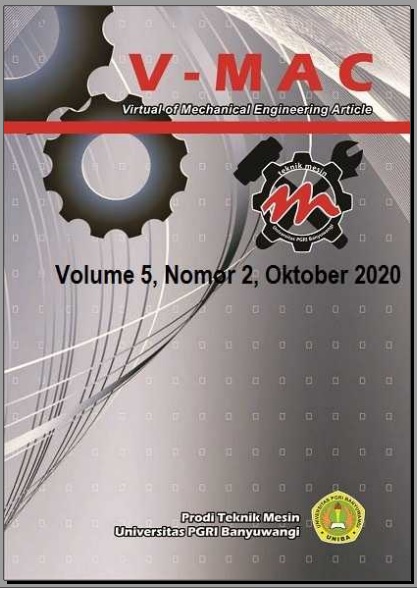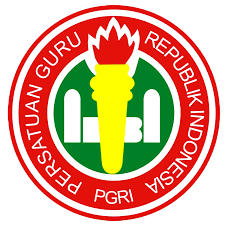Pengaruh Beban Tersebar dan Terpusat Terhadap Lendutan (Cantilever) Batang Besi
DOI:
https://doi.org/10.36526/v-mac.v5i2.1040Abstract
In development planning in the mechanical industry or civil engineering construction, it is very common to use the properties of the iron rod material which can deflect or what is known as a cantilever. The factors that affect the size of the force exerted on the stem are directly proportional to the amount of deflection that occurs. In other words, the greater the load experienced by the rod, the greater the deflection. Deflection of rods plays an important role, especially in building construction, wherein certain parts such as the shaft, deflection is very undesirable. Because of deflection, the work of the shaft or construction will be abnormal so that it can cause damage to the construction or other parts. This study aims to find out how much deflection of cantilevered rods using metal plate material when given a distributed and concentrated load. Based on the data obtained from the research process, the results in this study indicate that there is an effect of slackening distance on the iron plate with 3 variations in loading. The results showed that the loading rate affected changes in the angle of deflection of the iron plate in every variation of the number of plates used. The greatest effect occurred in the plate variation size of 0.8 mm with a loading level of 3 kg, namely 3.64 x 10-5 and the smallest effect on plate variations was 1.8 mm with a loading rate of 3 kg, which was 0. The results showed that the loading rate was spread across 3 plate variations. with a load of 3 kg spread over 3 points with a distance of 15 cm from point 1 to point 3. The biggest deflection effect occurs in plate variations of 0.8 mm which is 3.64x10-5 and the smallest effect on plate variations is 1.8 mm with the same load of 0.
Downloads
Published
How to Cite
Issue
Section
License
uthors who publish with this journal agree to the following terms:
1. Copyright on any article is retained by the author(s).
2. The author grants the journal, the right of first publication with the work simultaneously licensed under a Creative Commons Attribution License that allows others to share the work with an acknowledgment of the work’s authorship and initial publication in this journal.
3. Authors are able to enter into separate, additional contractual arrangements for the non-exclusive distribution of the journal’s published version of the work (e.g., post it to an institutional repository or publish it in a book), with an acknowledgment of its initial publication in this journal.
4. Authors are permitted and encouraged to post their work online (e.g., in institutional repositories or on their website) prior to and during the submission process, as it can lead to productive exchanges, as well as earlier and greater citation of published work.
5. The article and any associated published material is distributed under the Commons Attribution 4.0 International License.





















